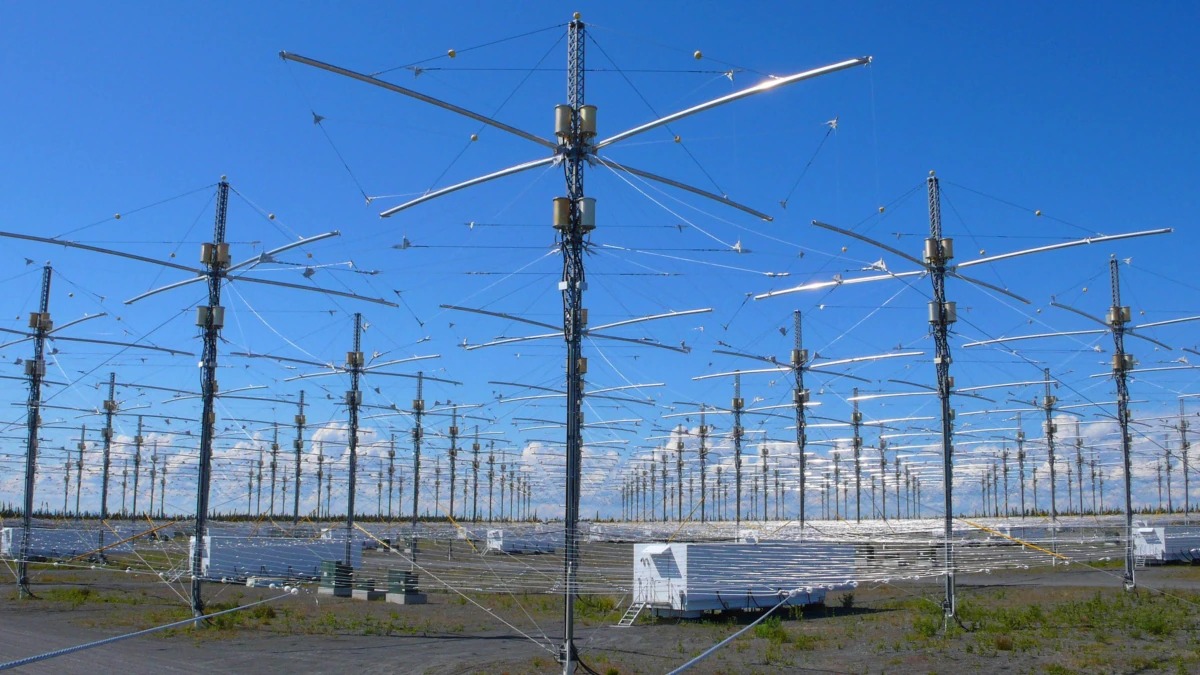An antenna field in Alaska called HAARP has completed a 10-day experiment. This object has given rise to many conspiracy theories, but in reality scientists use it for useful purposes. During the latest tests, researchers tried to send radio signals to the Moon and Jupiter in the hope of getting them back.

The High-frequency Active Aurora Research Program (HAARP) conducted a 10-day scientific campaign that lasted until October 28. During the tests, 13 experiments were performed.
HAARP consists of 180 high-frequency antennas, each of which is 22 m high and is spread over 13 hectares near Gacon, Alaska. The research center transmits radio beams towards the Earth’s ionosphere, located approximately at an altitude of 80 to 600 km above the surface. HAARP sends radio signals into the ionosphere and waits for them to return to measure the disturbances caused by the Sun.
“Moon Bounce”
In one of the latest experiments, known as the “Lunar Bounce,” a team of researchers from NASA’s Jet Propulsion Laboratory, Owens Valley Radio Observatory and the University of New Mexico transmitted a signal from HAARP antennas in Alaska to the Moon, and then waited to receive the reflected signal back to observatories in California and New Mexico.
The aim of the experiment is to study how three objects in Alaska, California and New Mexico can work together for future observations of near-Earth asteroids. HAARP is able to transmit a signal to an asteroid passing by the Earth and receive a reflected signal in response, which will indicate the composition of its space rock.
Connection with Jupiter
Another experiment sent a radio beam to Jupiter, which is now very close, about 600 million km from Earth. The sent beam was reflected from the ionosphere of Jupiter, and then was received by the observatory in New Mexico.
The experiment on Jupiter was conducted by the Johns Hopkins Laboratory of Applied Physics and is aimed at creating a new way of observing the ionospheres of other planets. Given how far Jupiter is from Earth, this experiment is a test of HAARP’s ability to transmit signals over long distances.
Ghosts in the Air Glow
This experiment turned out to be more artistic than scientific. Ghosts in the Air Glow transmitted videos, images, spoken words and sound compositions to the ionosphere and waited for the signal to be reflected in order to check the transient limit of the atmosphere.
Mystical HAARP
HAARP was originally a U.S. Air Force project to study solar flares that could disrupt communications and the Earth’s electrical grid. But in 2015, the BBC decided they were no longer interested in supporting HAARP. Therefore, the ownership was transferred to the University of Alaska. Although HAARP was within the purview of the Air Force, it inspired several wild conspiracy theories, in particular that its antennas were used to change the weather, create deadly hurricanes, and even mind control.
Earlier we reported about how a schoolgirl got in touch with an ISS astronaut via amateur radio.
According to the materials of the Geophysical Institute of Alaska
Follow us on Twitter to get the most interesting space news in time
https://twitter.com/ust_magazine

